Knights of the Chalice 2 Review
Knights of the Chalice was a love letter to some of the first Dungeons and Dragons games ever made, the so-called gold box games. In many ways it was very conventional. After helping defend your knightly keep against attacking humanoids, you wandered the world map, visiting settlements, storming enemy strongholds, and uncovering an evil conspiracy against your knightly order and the regional settlements. It was also primarily a dungeon crawler, full of old school design decisions, such as extremely brutal encounters and being without warning thrown into battles against waves of enemies without the ability to escape or rest. It was also primarily a game about combat.
Knights of the Chalice 2 (
KOTC 2) keeps little of the nods to the Gold Box games, or to order of knights that gave the first game its name, but it does keep a lot of the design decisions its predecessor had. In fact, in a mechanical sense, it is even more combat oriented, brutal, and complex.

Mechanics
Knights of the Chalice 2 is a game of clever mechanics. It is also one of those games in which the mechanics sit in the limelight, while everything else serves to highlight them.
Unlike its predecessor, which features 3 classic, but highly customizable Dungeons and Dragons classes,
Knights of the Chalice 2 has 22 classes, many of which have been tweaked and altered. It also like its predecessor features a massive amount of feats. Many of these, like being able to grapple, trip, and disarm, aren’t implemented in most mainstream Dungeons and Dragons or Pathfinder games. Deciding the standard Dungeons and Dragons 3.5 system wasn’t complex enough by giving its characters one feat every 3 levels,
KOTC 2 gives its characters 2 to 3 feats every level. It also features a number of races, including many more exotic ones, like the centaur, half giant, kobold, and mantis warrior. These too have some rules that differ to some degree to their tabletop counterparts.
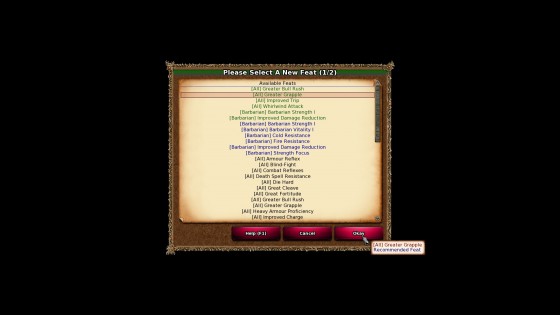 My barbarian gets 2 feats when leveling up. The options I have is almost overwhelming. Green feats are recommended, Blue feats are class feats for the barbarian only.
My barbarian gets 2 feats when leveling up. The options I have is almost overwhelming. Green feats are recommended, Blue feats are class feats for the barbarian only.
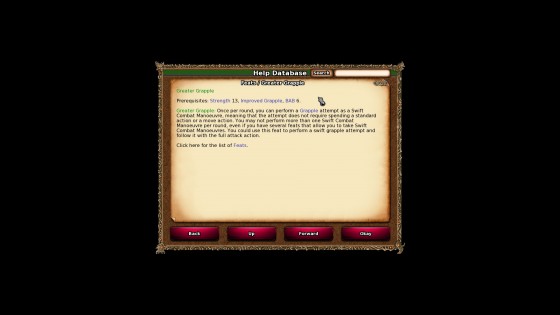 Best go with Greater Grapple, it gives me 1 free grapple attempt a round. And yes almost all your enemies can grapple or trip your characters for free too.
Best go with Greater Grapple, it gives me 1 free grapple attempt a round. And yes almost all your enemies can grapple or trip your characters for free too.
takes all these classes and races and uses them in place of skills or abilities to give you choices to overcome obstacles and win combat. It does this in a meaningful and fulfilling way. These choices are what most impressed me about
Knights of the Chalice 2. Half giants can rip open metal gates, rogues can ambush enemies and haggle with NPCs. Druids can find healing herbs and lead your party through underwater passages. Pscionicists can mentally control opponents disrupting enemy plans, paladins can detect evil, warriors can jump across chasms, monks and clerics can understand religious symbols, wizards can decipher runes and understand magic events, bards can use their music to disrupt rituals, halflings and kobolds can slip through tight spaces, and elves are good at noticing concealed passages or treasure. This is also highly mechanical.
Knights of the Chalice 2 doesn’t have much dialogue or story. What these class and race qualities do is give you noticeable advantages in some of the game’s more difficult combats. They also let you discover shortcuts to avoid some enemy encounters and more easily backtrack to safe spots. In addition, they help you find extra treasure and navigate environmental obstacles.
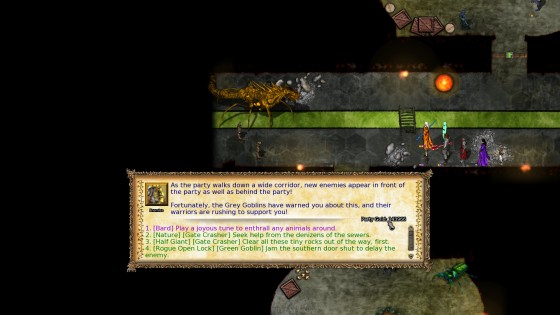 I have a lot of options before the green goblins spring their ambush. My rogue and half giant have options to turn the tide of the battle, but I don't have a bard in my group so I can't gain those advantages.
I have a lot of options before the green goblins spring their ambush. My rogue and half giant have options to turn the tide of the battle, but I don't have a bard in my group so I can't gain those advantages.
makes a number of decidedly antiquated decisions in terms of game design. Multiple times I passed a point of no return without realizing it and decided not to reload after 30 minutes of fights just to go back and do quests I hadn’t finished or visit undiscovered parts of the map. You can also get trapped in a portion of one map where you have to survive multiple battles without having the chance to rest or backtrack. The designer decided to make up for this by having the party find overly powerful consumable items. For example, in one area full of fire monsters, if you choose to fight the correct battle first, you will be rewarded with scrolls and wands full of ice spells. If you choose the incorrect battle, you will probably die, or far less likely somehow win by the skin of your teeth by using all the resources at your disposal and getting some good dice rolls. In most D&D type games I horde consumables, use them only grudgingly when needed, and end the game with a big stash of them. In
KOTC 2 this simply wasn’t an option more me.
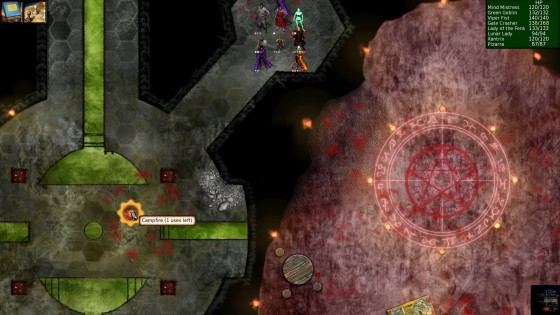
To be fair though, the game also has some modern features, such as recommending character build options. It also has various difficulty levels. The easy level seems to heal characters after every battle, which makes surviving multiple consecutive battles easier.
Combat
In the great majority of
Knights of the Chalice 2, you will be spending time in vast dungeons fighting one combat after another. Unlike your typical D&D game,
Knights of the Chalice 2 borrows a lot from tactical games like
Final Fantasy Tactics or
Divinity: Original Sin. There seem to be pits of fire, acid, ice, and spikes everywhere. Your opponents regularly cast such wonderfully annoying spells as grease, web, entangle, quicksand, gust of wind and earthquake. It is an unusual fight when a monster doesn’t try to grapple, bull rush, disarm or trip your characters. And quite honestly to win against them you better be willing to use these tactics too.
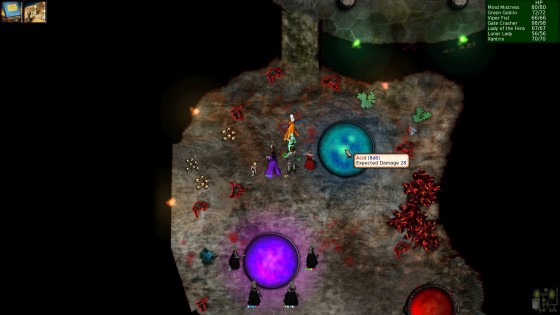 This acid pit is just one example of environment hazards that you have to be careful of in combat.
This acid pit is just one example of environment hazards that you have to be careful of in combat.
In
Knights of the Chalice 2 you are often severely outnumbered by dangerous opponents, so if you don’t manage to get the jump on them and disable or severely hamper them you will quickly get overwhelmed. In a way this reminds me of the
Wizardry games. If I didn’t have the vast majority of my opponents severely disadvantaged or disabled by the end of round 2, it was normally time to reload.
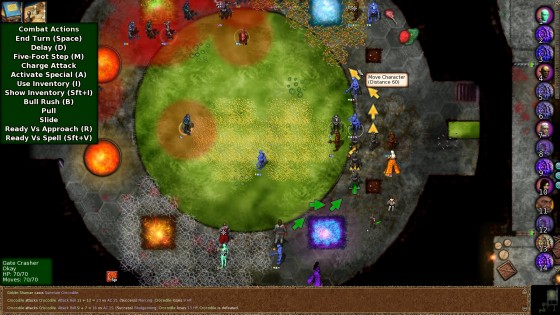
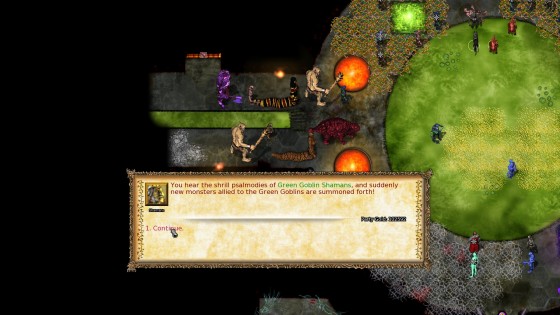 Surprise! The enemies get reinforcements!
Surprise! The enemies get reinforcements!
If that wasn’t enough, KOTC likes to, without warning, bring in enemy reinforcements and have you fight one wave of enemies after another without time to recuperate. Also don’t think you can safely backtrack to a merchant or a campfire (where the game allows you to rest, luckily without interruption or ambush, though campfires have limited uses) just because you’ve cleared an area. You will often be ambushed by new opponents when entering a room a second time.
By the time I finished the second major area, I was surprised if I ended up in a straightforward battle (You know the kind that make up the bulk of most D&D games). Personally, I would have preferred if
Knights of the Chalice 2 had more conventional D&D combat, where you could get around better with any mix of characters. But I understand that having put so much effort into the combat system, that the designer wanted to make the most of having thrown in things like elevation, dangerous terrain, and combat maneuvers.
What is the answer to extremely difficult combat, you might ask? Maybe to make combat easier or less complex? No, the developer decided it much better to shower the party with powerful and complex magic items. And I, at least, needed every last one of them. There was no way my 7th level party was going to win the first battle on the 3rd map of Augury of Chaos without those 2 earthquake scrolls. Or the scroll that quickened my wizard for 3 rounds.
Two things
Knight of the Chalice 2's combat does offer the player are challenging combats and a multitude of options. Also, while many games offer a limited supply of the same enemies who appear again and again,
KOTC 2 has a huge variety of enemies. Especially in a game with such a focus on combat, that’s a great thing.
Stories or at least Scenarios
Knights of the Chalice 2 was envisaged as an engine with a powerful editor and multiple scenarios. The game comes with two, a quite long tutorial dungeon and a module with multiple sprawling dungeons called Augury of Chaos. The developer is planning two more modules and has invited anyone who can learn how to use the editor to make ones themselves and to post them on the Nexus Mods website or to sell their modules in partnership with the developer.
So, when I talk about story and atmosphere, I am referring to Augury of Chaos and the Tutorial. Now that that is clear, it is pretty easy to say that anyone coming into either of these modules expecting much of story, interesting writing, memorable companions, or a unique atmosphere will be vastly disappointed. The Tutorial’s story is that you are investigating a dungeon. That’s about it. To be fair the Tutorial is there to teach you the game’s mechanics, and it does that pretty well. That doesn’t mean it is easy. At one point your low level party encounters 2 elf necromancers and a bunch of mummies in a room full of pits. There is no way you can possibly win the battle without pushing or repositioning at least some of your enemies into those pits. And before you say that doesn’t sound so bad, your enemies are going to try to throw you into the pits as well. The story of Augury of Chaos involves your characters visiting a town, which unexpectedly gets attacked. Then they flee into the sewers below town, which is full of monsters who could have probably stamped the town into the ground long ago if they had ever bothered coming up. These sewers turn out to be a multi-level mega dungeon that makes up about half of the module. Then your party escapes and goes after the baddies who attacked the town.
You do meet NPCs along the way, but most of these serve a very mechanical purpose, acting as vendors, or quest givers. One thing I have to give the developer credit for is that the few npcs who are there will change up their dialogue at times after you defeat certain enemies, which give you the sense that your actions have consequences.
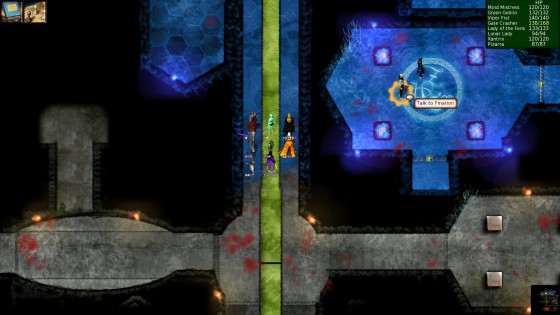 I rescued this merchant in the sewers. Luckily he still has his cart of powerful magic items.
I rescued this merchant in the sewers. Luckily he still has his cart of powerful magic items.
In fact,
KOTC 2 boasts about being a game about choice and consequences, and it is, but more mechanically than in terms of story. For example, In the lower sewers I meet 3 hags, they act as vendors, and apparently have turned a few humanoids into stone. (Though they claim they are just normal statues.) To get to the next area I have to convince the hags to lower a spell preventing my group from using the exit. This involves a challenge, which turns out unsurprisingly to be a combat. Through various mechanical options depending on my party’s races and classes, I can lower the difficulty of the combat. I can also attack the hags before or after the challenge, in which case they are no longer there as vendors. While the mechanical choices are interesting, I don’t really find myself caring emotionally one way or another, because the story and writing aren’t sufficient. I only care what mechanical benefits I get or how much extra time I have to spend or rewards I recieve from fighting an extra battle. That’s really a sharp distinction from how I’ve played other D&D based games like
Pathfinder: Wrath of the Righteous,
Pillars of Eternity 2 or even
Solasta, where I actually acted according to how I think my characters would feel about the situation.
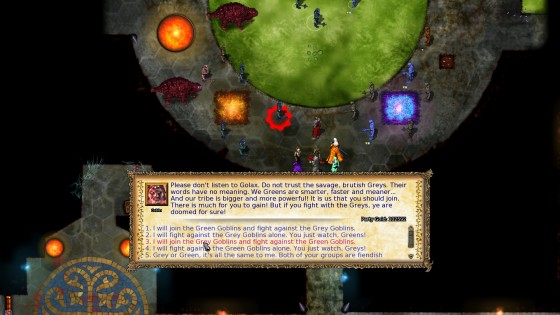 I have choices galore. I can fight for the green or the grey goblins, with or without help. It changes the combat to come, but I am not invested in one group or the other.
I have choices galore. I can fight for the green or the grey goblins, with or without help. It changes the combat to come, but I am not invested in one group or the other.
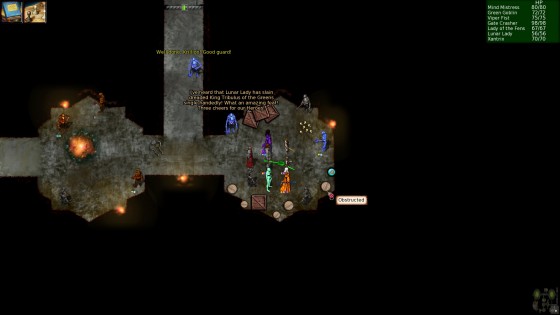 It is at least a nice touch that the grey goblins have take noticed that I fought on their side.
It is at least a nice touch that the grey goblins have take noticed that I fought on their side.
The same goes for companions. I picked 2 along the way. The first one I convinced to join the party because I had a character with a class which he was willing to travel with. His detect evil ability proved useful, and it was for that reason I picked up my second companion. I had defeated her when she fought me as an enemy. If my first companion hadn’t determined she wasn’t evil, I might have killed her. She warned me about an ambush in a chamber beyond the one where I encountered her, where her former allies were lurking, and so I wasn’t surprised by them. You see I haven’t mentioned their personalities or relationships with my party or with each other, because other than some introduction text, we don’t learn much about that kind of thing.
The main way
KOTC 2 breaks up combat is not with story, but with puzzles. There is a huge variety here ranging from crossword puzzles to musical, mathematical, lore, or even chess puzzles.
Knights of the Chalice 2 has a built-in hint system in case math or chess is not your strong suit. That ghostly puzzlemasters guard the keys you needed to exit the sewers makes as much logical sense as some of the story events do. In this way also
KOTC 2 feels a lot more like a classical dungeon crawler than a story or exploration driven CRPG.
The Editor
So, the game comes with an editor. I am someone who actually owns 2 versions of RPG Maker, and have spent hundreds of hours tinkering with them and have actually finished 2 short games (2 hour and 3 hour playing time respectively). For that reason, the
KOTC 2 editor was of some interest to me. There is an extensive manual for it included with the game, but the editor itself is not nearly as user friendly as RPG Maker. For example, you can’t make maps directly in the editor, but have to use Paint or Photoshop and then import the map into the editor. The editor is, however, quite powerful if you invest the time (and it will be a lot of time) into learning how to properly use it. One interesting thing is that you can use the editor to open up both the Tutorial and Augury of Chaos and to look at them from the inside. You can also edit them to your heart’s desire.
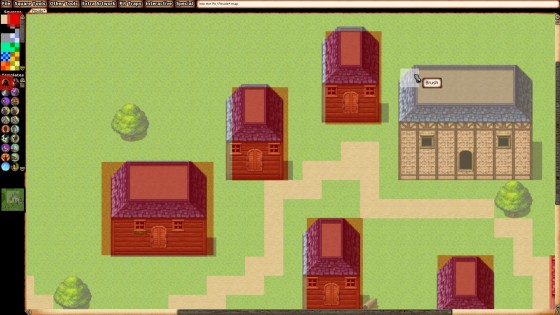
 Here is the editor, with a map I made in RPG Maker.
Here is the editor, with a map I made in RPG Maker.
The Outside Package
KOTC 2 uses art from Pioneer Valley Games. Its used in a number of RPG Maker games. I think its pretty good, and that the artist has a lot of talent. That said its not anywhere near AAA standards. The sound is decent in
KOTC 2 and your characters and some of the NPCs actually have limited voice acting, even if its only to say “A den of stinking evil” or “we should camp soon!” All this is actually pretty good for an indie game, and so I must say is the scope of the game (I spent over 40 hours in the game, and well over 30 hours of that was in Augury of Chaos, and the rest in the editor or tutorial) and what’s included in the final package. However, as I am writing
KOTC 2 has the same non-sale price tag as Pathfinder:Wrath of the Righteous, and personally I am glad I got it for half that price on Kickstarter. I’m very certain this game would not be in my library otherwise and I can understand that others will not touch it at its current selling price. So, while I think you do get a lot of game, I find it overpriced according to my own standards.
Final Thoughts
Some readers will see my final rating and come to conclusion I don’t like
Knights of the Chalice 2 or I have some malice against the developer, and that couldn’t be further from the truth. What is true is that its hard for me to think of a more niche product than this game is. Can I recommend it without reservation to RPG fans? No. To fans of D&D games? No. What about to fans of D&D games on RPGWatch? No.
KOTC 2’s visuals and sound, its complexity, its difficulty, its lack of story, and its sale price are going to drive away potential purchasers in droves. At times when playing this game I second guessed the developer’s decisions to make an entry module, in which you could easily lose before you started by taking the wrong mix of classes, races, and feats (at least on standard difficulty and easy is no cakewalk either) and a quite difficult tutorial. But what do I know? Maybe ratcheting everything up a notch in a sequel to a predecessor that was already complex, difficult, visually unattractive, story light and relatively quite expensive at the time of its release is the way to please your core audience. And maybe guaranteeing that a small number of sales generate a good amount of income is a successful sales model. Or maybe the developer just made the game he wanted to play and asked for what he thought his time and effort were worth.
In the end
Knights of the Chalice 2's current two modules are games for min/maxers, people who like to try to figure out how to build the mechanically most powerful characters from hundreds of options and watch them succeed against nearly impossible odds. I enjoyed it, even if I had to reload horrifically often. Few games motivate me enough to want to retry fighting the same battle 7 times in a row after having my party crushed. Good, in
KOTC 2 you usually know pretty quickly if its curtains, because combat is so deadly. In the end I think some players will fall in love with
Knights of the Chalice 2, because of what it offers in terms of challenge, mechanical depth, and content, and they probably will be pretty unhappy with my final rating. The rest of you should keep away, because this game isn’t for you.
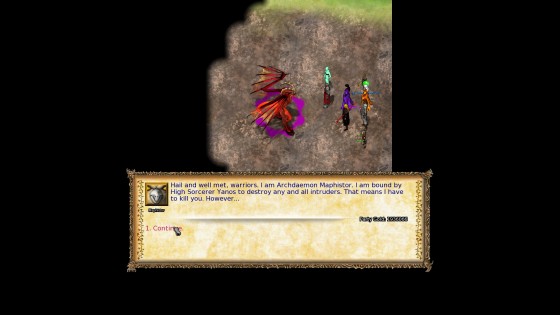
Information about
Knights of the Chalice II
Developer:
Heroic Fantasy Games
SP/MP: Single-player
Setting: Fantasy
Genre: RPG
Combat: Real-time
Play-time: 10-20 hours
Voice-acting: Partially voiced
Regions & platforms
Internet
·
Homepage
· Platform: PC
· Released: 2022-03-25
· Publisher:
Heroic Fantasy Games
More information
Summary
Pros
- Massive amount of choices for character building.
- Massive amount of tactics in combat.
- Extensive use of class and race in influencing events.
- Excellent variety of monsters and items.
Cons
- Not much story. Or interesting characters.
- Presentation will not be for everyone.
- The difficulty will be a turn off for many players.
- The complexity will be a turn off for many players.
- The current price will be a turn off for many players.
Rating: Good
A good game with some smaller issues or weaknesses, but still very recommended.
Review version
Steam


































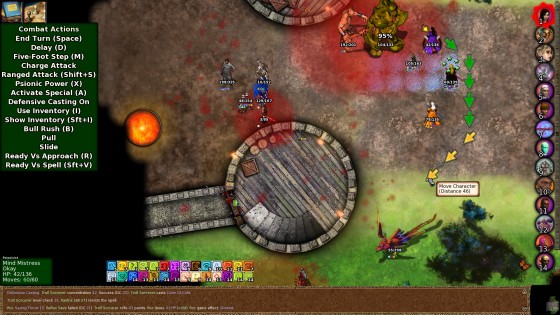
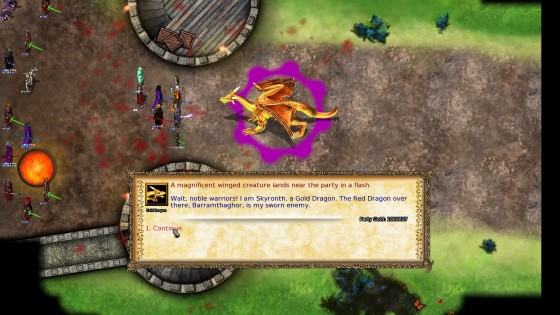

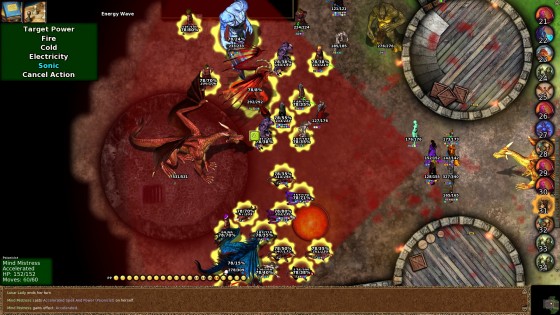




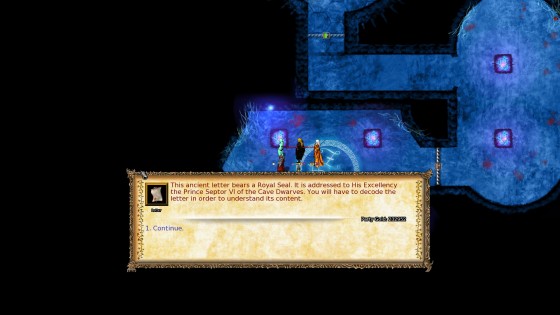
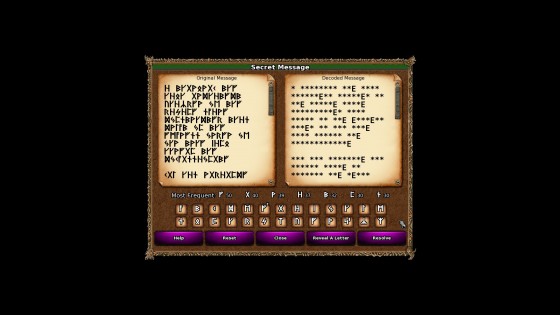



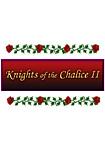

 It's been 10+ years since I finished KotC and am looking forward to getting into fights where I can do things like bull rush and grapple once again (no homo). Based on previous comments it seemed like a lot of enemies get insane initiative bonuses combined with powerful/borderline bullshit first-strike abilities, such that you essentially need to reload if you don't win initiative. I wasn't sure whether reducing the bonus to enemy initiative would make this aspect easier to deal with without trivializing combat as a whole.
It's been 10+ years since I finished KotC and am looking forward to getting into fights where I can do things like bull rush and grapple once again (no homo). Based on previous comments it seemed like a lot of enemies get insane initiative bonuses combined with powerful/borderline bullshit first-strike abilities, such that you essentially need to reload if you don't win initiative. I wasn't sure whether reducing the bonus to enemy initiative would make this aspect easier to deal with without trivializing combat as a whole.



